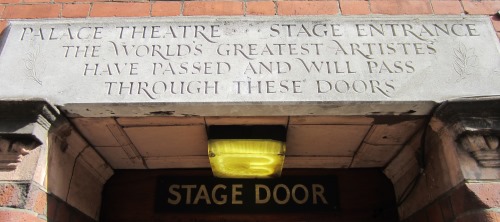
Palace Theatre
Londres - Angleterre
Construction: 1891
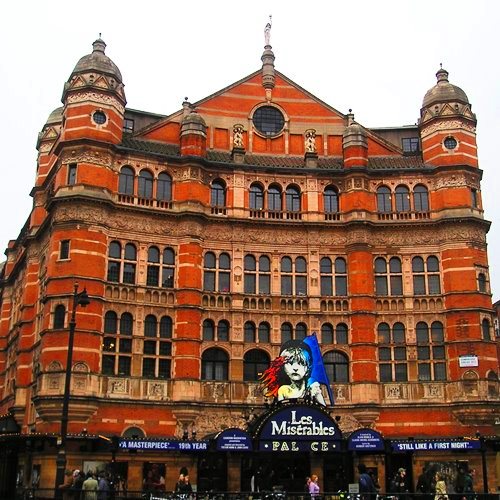
Topologie du théâtre
Nombre de salles actives: 1
Salle 1: (1390) 1891 - Actif
Accès
En métro: Leicester Square (Piccadilly/ Northern lines)/ Tottenham Court Road (Northern/ Central lines)/ Leicester Square
En bus: 14, 19, 22, 24, 38, 40, 176
Adresse: 109-113 Shaftesbury Avenue, London, W1D 5AY
Evolution
Bâtiment: 1891. Designed primarily by Thomas Collcutt for Richard D’Oyly Carte; opened on 31 January as the Royal English Opera House / 1892. Sold to Sir Arthur Harris and renamed Palace Theatre of Varieties / 1908. Amphitheatre remodelled by F. Emblin-Walker / 1911. Renamed Palace Theatre / Statutorily Listed Historic Building: Grade II*
Nom:
Propriétaire(s)
Remarquable
Exterior of Elllstown brickwork and delicate buff terracotta / Interior as an all-embracing concept and use of materials, from Imported Algerian and Italian marbles to William Morris carpets / Archaeological remnants of Iron-and-wood stage machinery designed and installed by Walter Dando

1390
1891 - Actif
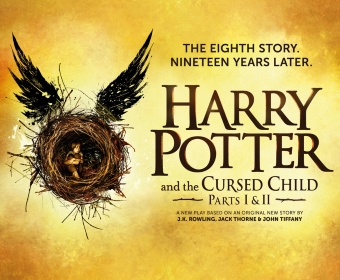
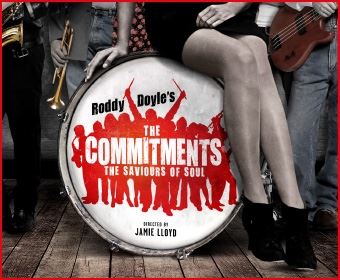
We shall never be privy to the thoughts of the Duke of Cambridge when he opened Charing Cross Road to the public for the first time in February 1887, but as he surveyed the poor quality of the new architecture he must have wondered at the almost unprecedented opportunities lost both here and In Shaftesbury Avenue. Cambridge Circus, named after the duke, was an attempt to create a unified whole, but carried out with little sense of the dramatic and with minimal design impact, mainly in red brick and dressed stone. It is to the buildings of the 18th and early 19th centuries in surrounding streets, such as Romllly Street and Greek Street, that one has to look for a superior quality In scale and design.
While the blocks of offices, chambers and shops were filling the sites along the new roads, Richard D’Oyly Carte was discussing with the Metropolitan Board of Works the acquisition of the prime irregular quadrilateral Island site on the west side of Cambridge Circus. Negotiations reached a conclusion, and on 15 December 1888 his second wife, Helen, laid the foundation stone of his new opera house.
D'Oyly Carte was born locally, in Greek Street, on 3 May 1844. After studying at University College, London, he worked with his father as a maker of musical Instruments for the army, until setting up as a concert agent In 1870. Eminently successful, he 'discovered' Gilbert and Sullivan, probably through their production of Thespis in 1871, and in 1875 produced their Trial By Jury at the Royalty Theatre. Success followed upon success, and profits soared to such heights that D’Oyly Carte was able to finance the building of the Savoy Theatre in 1881. An opera-loving speculator, he resolved to build a London theatre devoted to grand English opera, and the vacant plot on Cambridge Circus appeared to be the ideal site.
Architect J. G. Buckle was commissioned to advise on the original design concept, and his adventurous steel-framed cantilevering of the royal tier stalls, the first circle and the amphitheatre provided an Inspired skeletal form around which to build. Unusually, D'Oyly Carte dispensed with a contractor and took upon himself the supervision of
building works alongside G. H. Holloway, whose buildings already included the Savoy Hotel and the Hotel Metropole. It was not until the ground works were well advanced that another architect, T. E. Collcutt, was engaged to give architectural substance to the interior and exterior of the building.
Thomas Collcutt was born in Oxford in 1840 and educated at Mill Hill School. He was articled in London, and lived most of his life at Totteridge, Middlesex, in the beautiful Arts and Crafts-style house he designed overlooking the green. A Gothiclst at heart, Collcutt was forced to adapt to fluctuating taste, thus developing a hybrid Tudor-Renaissance style and winning, in 1886, the competition for the Imperial Institute in South Kensington. Not a specialist In theatre design, Collcutt saw the D’Oyly Carte commission purely as a piece of architecture, much as he would a small country house, or commercial building: a project to be given the profound consideration of an academic mind.
The exterior of the building is designed in a northern French Renaissance manner, In red brick and terracotta. The bricks are a dark red from the Elllstown Brickworks, an offshoot of the Leicestershire coal-mining Industry, and the delicately figured buff terracotta work was provided by the Lambeth firm of Doulton and Co. The slightly cbncave front to the building echoes the curve of the Circus, articulated by octagonal corbelled domed corner towers and turrets. After a century of attack from a fume- and grime-laden atmosphere, the terracotta has required fairly extensive repair and replacement. Attempts to clean the building in the latter decades of the 20th century regrettably resulted In some surface erosion caused by overenthusiastic sandblasting.
Although the theatre opened as the Royal English Opera House on 31 January 1891, design changes continued to be made up to 1893. Notwithstanding these minor hiccups, the interior is sumptuous: Algerian and Italian marbles were used not only on the grand staircase, but also In vestibules, saloons and even the auditorium. Painted wall decoration in green and gold, arabesques and allegorical figures served only to emphasize the accomplishment of the design. The carpets were designed by William Morris.
The care that D’Oyly Carte devoted to the public parts of his Royal English Opera House extended behind the proscenium arch, where he introduced a revolutionary flat stage. In 1887 he also employed Walter Dando, a stage engineer of genius, whose fame sprang from his work in the Paris theatre. As well as installing chariot and pole machinery on a French model, designed to combine stability with efficient and smooth movement of set-piece and ground-row scenery, Dando was aware of other aspects including the practical use of the stage revolve. Having lain idle for years his substantial sub¬stage machinery has survived against the odds. On its island site the theatre is always in desperate need of space, and that space, at least prior to purchase by Andrew Lloyd Webber, seemed to be under the stage. Dando remained at the theatre until 1896, when the world of early cinema beckoned.
D’Oyly Carte opened with Sir Arthur Sullivan’s Ivanhoe (1891) followed by Messager’s The Basoche (1892). The fact that he was unable to stage an English opera as his second presentation depressed him, and after a season starring Sarah Bernhardt in a series of French dramas, he sold the building to Augustus Harris, who renamed it the Palace Theatre of Varieties In 1892. D’Oyly Carte’s died on 3 April 1901 at Hastings, Sussex.
Since then, many great names have passed through the stage door, including Marie Tempest in 1906; Maud Allen as Salome in 1908; and the inimitable Pavlova in 1911, followed by Nijinsky in 1914. In 1921 Harry Lauder appeared for eight weeks in a variety bill and in 1933 Fred Astaire starred in Gay Divorcee. As the decades passed, in 1959 short seasons included vehicles for Johnnie Ray and Connie Francis, and in 1961 The Sound of Music opened here, followed by Cabaret (1968), Oklahoma! (1980) and, on 4 December 1985, Les Misérables.
In the 1950s, Emile Littler, the theatre’s owner, imposed upon the interior a naive, gung-ho decorative scheme which would seriously detract from its considerable architectural quality for over four decades. Without doubt this situation would have remained static had Andrew Lloyd Webber not Initiated with financiers Bridgeoint Capital in 2004 a sweeping restoration project which resulted in one of the most beautiful transformation scenes achieved In any British theatre.
‘The world's greatest artistes have passed and
will pass through these doors'
INSCRIBED IN THE LINTEL ABOVE THE STAGE DOOR
1891. Designed primarily by Thomas Collcutt for Richard D’Oyly Carte; opened on 31 January as the Royal English Opera House / 1892. Sold to Sir Arthur Harris and renamed Palace Theatre of Varieties / 1908. Amphitheatre remodelled by F. Emblin-Walker / 1911. Renamed Palace Theatre / Statutorily Listed Historic Building: Grade II*
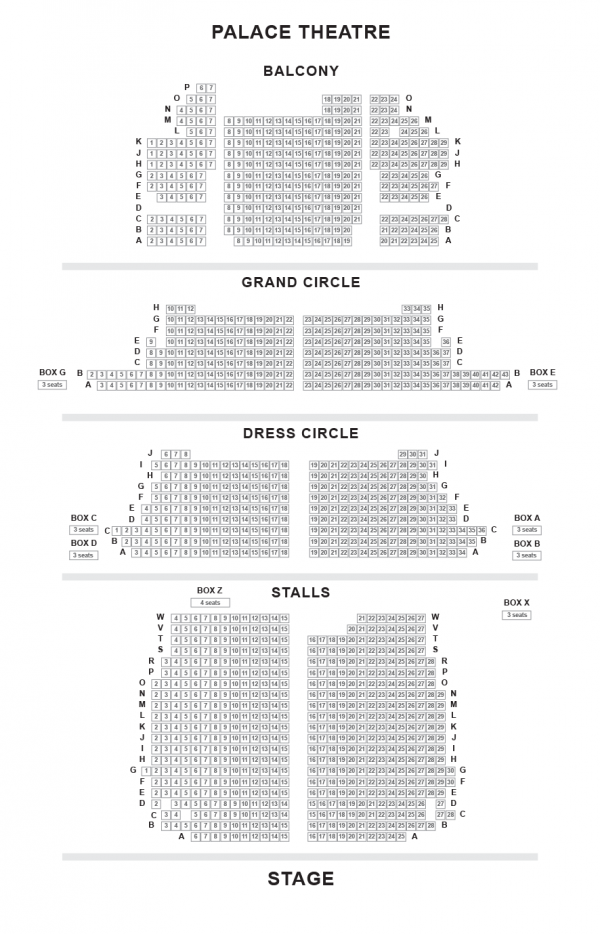
Infos complémentaires:
The stalls are divided into two blocks by a central aisle running the length of the section. Unlike the higher tiers the Stalls are not rounded and exist as a block, making sight lines on the whole to be effective. Better seats are towards the middle of the section about halfway back. The worst seats tend to be around the edges of the auditorium; in particular those within the first three rows, as the shape of the auditorium begins to fan out. Pillars feature towards the front of the section both house right and left at rows C, H and S and can cause restrictions.
The overhang begins to affect seats midway back from row M and is a significant problem in the final rows. Seat Plan would advise to sit further back in the Dress Circle for the same price than the rear stalls. Legroom is particularly tight in this section, as with the rest of the theatre. For maximum comfort select aisle seats and not those in the middle of rows. Boxes may also provide better legroom for taller audience members.
The Dress Circle feels relatively small and compact compared to other areas of the theatre. This section provides the best overall view, as it doesn't feel too high or far from the stage. The section is divided in half by a centre aisle, which again should be utilised for those wishing for extra legroom. The Dress Circle curves meaning the ends of rows A-C become restricted and should only be purchased if sold for a discounted rate. Row J acts as a ‘half row’ at the back of the section and should be avoided at all costs as they sit higher than any other seats in the section, reducing the view considerably.
Legroom in the front row is notoriously bad due to the curve of the balcony. No safety rails exist however apart from at the side of the stairwells, meaning that the view is exceptionally clear. The Upper Circle overhangs the back two thirds of the section, cutting off the top of the proscenium.
The Grand Circle again feels rather cosy, divided into two neat sections by a centre aisle. For optimum legroom choose those seats in the centre rather than the restricted view seats at the end of each row. Safety rails create restrictions around the ends of rows nearest to the stairs but do not restrict those sitting towards the centre. The rake is steep which allows you to see over the heads of the people in front, unless they lean to peer over the balcony at any action at the front of the stage or on the apron. The overhang creates a low ceiling at this level, beginning from the third row and affecting the view of those seats further back. Depending on the production missing the top of the proscenium may not be too much of a distraction.
This tier can feel extremely high and somewhat detached from the action. Because of the curve of the circle many restricted view seats are available on this level. For a bargain price many of these are worth taking, particularly those further back and closer to the centre.
The Balcony at the Palace is larger than both the Dress and Grand Circle. It is rumoured to even be one of the steepest balconies in the whole of the West End, which is clear to anyone sitting there looking almost vertically onto the stage. The Balcony is divided into three sections by two aisles, creating a large central block of seats. Each aisle seat has a metal rail running along up to the top of the section along with posts, which can restrict legroom.
Large double rails run the entire length of the balcony which reduces visibility significantly for a large section of the seats. These are hard to avoid in most areas and create blind spots that are hard to manoeuvre around. Towards the back of the section one feels extremely far away from the action, making it difficult to see set pieces and anything past the proscenium. Seat Plan would only recommend these seats to people wanting a serious bargain, and even then it can rarely be worth it.
Exterior of Elllstown brickwork and delicate buff terracotta / Interior as an all-embracing concept and use of materials, from Imported Algerian and Italian marbles to William Morris carpets / Archaeological remnants of Iron-and-wood stage machinery designed and installed by Walter Dando

Théâtre
Original
2) Harry Potter and the Cursed Child, Part I (Original)
Joué durant 4 ans actuellement
Première preview: mar. 07 juin 2016
Première: sam. 30 juillet 2016
Dernière: Open end
Compositeur: *** Divers •
Parolier: *** Divers •
Libettiste: *** Divers •
Metteur en scène: John Tiffany •
Chorégraphe: Steven Hoggett •
Avec:
Commentaire: One play presented in two parts. Both parts are intended to be seen in order on the same day (matinee and evening), or on two consecutive evenings.
In December 2013, it was revealed that a stage play based on Harry Potter had been in development for around a year,[3] with the view to bringing it to the stage sometime in 2015. Created by J.K. Rowling, the Harry Potter series spans seven novels, selling more than 450 million copies, and was turned into an eight-part film series, which grossed more than £4.4 billion around the world. In addition, theme parks such as the Wizarding World of Harry Potter[6] and studio tours of the sets used in the films have opened based around the series. At the time of the announcement Rowling revealed that the play would “explore the previously untold story of Harry’s early years as an orphan and outcast”. In spring of the following year Rowling began establishing the creative team for the project.
Rowling stated shortly after the play's announcement that the piece would not be a prequel. In response to queries regarding the choice of a play rather than a new novel Rowling has stated that she “is confident that when audiences see the play they will agree that it is the only proper medium for the story”. Rowling has also assured audiences that the play will contain an entirely new story, and will not be a rehashing of previously explored content.
On 26 June 2015, the project was officially confirmed under the title of Harry Potter and the Cursed Child, and it was revealed it would receive its world premiere in the summer of 2016 at London's Palace Theatre. The announcement marked the eighteenth anniversary of the publication of the first Harry Potter novel, Harry Potter and the Philosopher's Stone, published on 26 June 1997. The play's official website was made available shortly after Rowling's announcement with a register for ticket pre-orders and biographies on the main creative team. (plus)
Presse: "It’s a spectacle for the theatre, one that is filled to the brim with fan service and magical imagery that will amaze. For any Potterhead who can get their hands on a ticket, it will no doubt be a fantastic experience..." Jack Shepherd for the Independent
"This is a production that thrills at the aura of possibility lurking in the Victorian splendour of the theatre itself, a bygone age of smoke and mirrors." Dominic Cavendish for The Telegraph
"It’s convoluted, but the latest expansion of the Potter universe is thrillingly staged, with time travel and age-old quests given a dash of post-Freudian guilt." Michael Billington for The Guardian
"For once the so-called theatrical event of the year really is just that...a feast for fans, packed with pathos, dazzling choreography and moments of pure enchantment." Henry Hitchings for The Evening Standard
Plus d'infos sur cette production:

Théâtre
Original
1) Harry Potter and the Cursed Child, Part II (Original)
Joué durant 4 ans actuellement
Première preview: mar. 07 juin 2016
Première: sam. 30 juillet 2016
Dernière: Open end
Compositeur: *** Divers •
Parolier: *** Divers •
Libettiste: *** Divers •
Metteur en scène: John Tiffany •
Chorégraphe: Steven Hoggett •
Avec:
Commentaire: One play presented in two parts. Both parts are intended to be seen in order on the same day (matinee and evening), or on two consecutive evenings.
In December 2013, it was revealed that a stage play based on Harry Potter had been in development for around a year,[3] with the view to bringing it to the stage sometime in 2015. Created by J.K. Rowling, the Harry Potter series spans seven novels, selling more than 450 million copies, and was turned into an eight-part film series, which grossed more than £4.4 billion around the world. In addition, theme parks such as the Wizarding World of Harry Potter[6] and studio tours of the sets used in the films have opened based around the series. At the time of the announcement Rowling revealed that the play would “explore the previously untold story of Harry’s early years as an orphan and outcast”. In spring of the following year Rowling began establishing the creative team for the project.
Rowling stated shortly after the play's announcement that the piece would not be a prequel. In response to queries regarding the choice of a play rather than a new novel Rowling has stated that she “is confident that when audiences see the play they will agree that it is the only proper medium for the story”. Rowling has also assured audiences that the play will contain an entirely new story, and will not be a rehashing of previously explored content.
On 26 June 2015, the project was officially confirmed under the title of Harry Potter and the Cursed Child, and it was revealed it would receive its world premiere in the summer of 2016 at London's Palace Theatre. The announcement marked the eighteenth anniversary of the publication of the first Harry Potter novel, Harry Potter and the Philosopher's Stone, published on 26 June 1997. The play's official website was made available shortly after Rowling's announcement with a register for ticket pre-orders and biographies on the main creative team. (plus)
Presse: "It’s a spectacle for the theatre, one that is filled to the brim with fan service and magical imagery that will amaze. For any Potterhead who can get their hands on a ticket, it will no doubt be a fantastic experience..." Jack Shepherd for the Independent
"This is a production that thrills at the aura of possibility lurking in the Victorian splendour of the theatre itself, a bygone age of smoke and mirrors." Dominic Cavendish for The Telegraph
"It’s convoluted, but the latest expansion of the Potter universe is thrillingly staged, with time travel and age-old quests given a dash of post-Freudian guilt." Michael Billington for The Guardian
"For once the so-called theatrical event of the year really is just that...a feast for fans, packed with pathos, dazzling choreography and moments of pure enchantment." Henry Hitchings for The Evening Standard
Plus d'infos sur cette production:

Musical
Original
40) Fermeture COVID (Original)
Joué durant 1 an 4 mois
Première preview: 16 March 2020
Première: 16 March 2020
Dernière: 19 July 2021
Compositeur:
Parolier:
Libettiste:
Metteur en scène:
Chorégraphe:
Avec:
Commentaire: Tous les théâtres anglais ont dû fermer dès le 16 mars 2020 suite à la pandémide de COVID… (plus)
Presse:
Plus d'infos sur cette production:
Plus d'infos sur ce musical

Divertissement
Revival
39) Eddie Izzard: Force Majeure Reloaded (Revival)
Joué durant 3 semaines
Première preview: 18 January 2016
Première: 18 January 2016
Dernière: 13 February 2016
Compositeur: *** Divers •
Parolier: *** Divers •
Libettiste: *** Divers •
Metteur en scène:
Chorégraphe:
Avec: Eddie Izzard
Commentaire:
Presse:
Plus d'infos sur cette production:
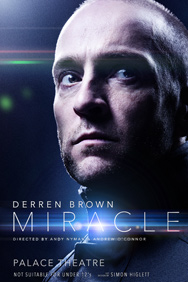
Spectacle
38) Derren Brown: Miracle ()
Joué durant 2 mois
Première preview: 11 November 2015
Première: 17 November 2015
Dernière: 16 January 2016
Compositeur: *** Divers •
Parolier: *** Divers •
Libettiste: *** Divers •
Metteur en scène: Andy Nyman • Andrew O'Connor • Derren Brown •
Chorégraphe:
Avec: Derren Brown
Commentaire:
Presse: Les critiques sont excellentes:
"The show is called ‘Miracle’, and by God, or Whoever, it lives up to that title...the finest work of his I’ve seen since he first made waves in 2000." Dominic Cavendish for The Daily Telegraph
"Some of his patter may be mildly cheesy, but Derren Brown’s latest show is full of deft quickfire illusions and spell-binding entertainment." Bruce Dessau for The Evening Standard
Plus d'infos sur cette production:

Musical
Original
37) Commitments (The) (Original)
Joué durant 2 ans 3 semaines
Première preview: 21 September 2013
Première: 08 October 2013
Dernière: 01 November 2015
Compositeur: *** Divers •
Parolier: *** Divers •
Libettiste:
Metteur en scène: Jamie Lloyd •
Chorégraphe: Ann Yee •
Avec: Denis Grindel (Jimmy Rabbitte), Killian Donnelly (Deco), Sarah O’Connor (Imelda), Stephanie McKeon (Natalie), Jessica Cervi (Bernie), Ben Fox (Joey ‘The Lips’), Mark Dugdale (Derek), Brian Gilligan (Billy), Andrew Linnie (Dean), Joe Woolmer (Mickah), Matthew Wycliffe (Outspan), Padraig Dooney (Ensemble)
Commentaire:
Presse: "The biggest compliment I can pay Jamie Lloyd’s production is to say that it really has got soul. It’s memorably gritty at times (the swear-word count is exceptionally high) and also proves wonderfully funny and touching."
Charles Spencer for Daily Telegraph
"If only Doyle – who adapted his own book – and director Jamie Lloyd had tried to give things some semblance of plot, still more some properly defined characters, they might have broken the jukebox-musical mould. Instead, this show simply buys into a form that has delivered big profits in the West End, and probably will here, too. "
Lyn Gardner for The Guardian
" It offers a pumpy night out full of noisy tunes played by a musically competent cast.I found it all faintly exhausting and blunt. Go to this show if you want lots of music and swearing. Do not go if you want insights or variety of tone and pace."
Quentin Letts for The Daily Mail
"The evening is much more successful as a staggered gig than as drama."
Paul Taylor for The Independent
"Has plenty of pace and energy."
Henry Hitchings for The Evening Standard
Plus d'infos sur cette production:
Plus d'infos sur ce musical
Andrew Lloyd Webber vend le théâtre à Nimax Theatre
Andrew Lloyd Webber vend le Palace Theatre à Nimax Theatres. A ce sujet, Nica Burns et Max Weitzenhoffer, les propriétaires de Nimax Theatres déclarèrerent au sujet du Palace Theatre "We are honoured that Andrew Lloyd Webber has entrusted us with the guardianship of this iconic building with its extraordinary history and will cherish it as he does. We have longed to own a major musical house and it doesn't get much better than the Palace."
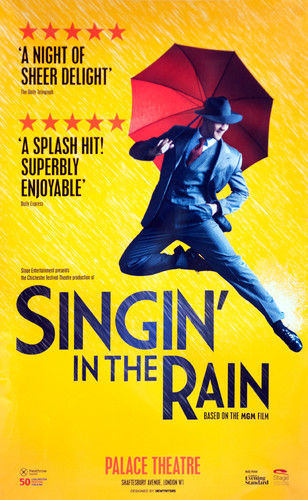
Musical
Revival
36) Singin' in the Rain (Revival)
Joué durant 1 an 3 mois 3 semaines
Première preview: 04 February 2012
Première: 15 February 2012
Dernière: 08 June 2013
Compositeur: Nacio Herb Brown •
Parolier: Arthur Freed •
Libettiste: Adolph Green • Betty Comden •
Metteur en scène: Jonathan Church •
Chorégraphe: Andrew Wright •
Avec: Adam Cooper (Don Lockwood), Louise Bowden (Kathy Selden), Jennifer Ellison (Lina Lamont), Stephane Annelli (Cosmo Brown), Peter Forbes (RF Simpson), Sandra Dickinson (Dora Bailey/Miss Dinsmore), Gillian Parkhouse, Nancy Wei George, David Lucas, Mark Hadfield, Frankie Jenna, Karen Aspinall, Emma Caffrey, Matthew Croke, Brendan Cull, Adam Denman, Kelly Ewins-Prouse, Charlene Ford, Olivia Fines, Tim Hodges, Nia Jermin, Peter Le Brun, Matthew Malthouse, Adam Margilewski, Oliver Metzler, Joseph Prouse, Charlotte Scott, Zara Warren.
Commentaire:
Presse:
Plus d'infos sur cette production:
Plus d'infos sur ce musical
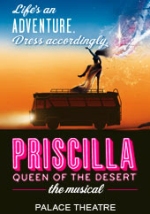
Musical
Original
35) Priscilla Queen of the Desert (Original)
Joué durant 2 ans 9 mois 1 semaine
Première preview: 10 March 2009
Première: 23 March 2009
Dernière: 31 December 2011
Compositeur: *** Divers •
Parolier: *** Divers •
Libettiste: Allan Scott • Stephan Elliott •
Metteur en scène: Simon Phillips •
Chorégraphe: Ross Coleman •
Avec: Jason Donovan (Tick/Mitzi), Oliver Thornton (Adam/Felicia), Tony Sheldon (Bernadette), Clive Carter (Bob), Kanako Nakano (Cynthia), Zoe Birkett, Kate Gillespie, Emma Lindars, Wezley Sebastian, Amy Field, Steven Cleverley, Daniele Coombe, Tristan Temple, John Brannoch, Philip Arran, Matthew Cole
Commentaire: The London production was a huge success, mostly welcomed as a joyful antidote to society’s lingering homophobia, and praised for its warm-heartedness, sheer exuberance, extravagance and completely over-the-top costumes and spectacle. The show ran the best part of three years, finally closing on New Year’s Eve, 2011. Cast changes during the run saw Ben Richards as Tick, Don Gallagher as Bernadette and Ray Meagher as Bob. The musical opened on Broadway in March 2011 with Will Swenson as Tick, Nick Adams as Adam, and Tony Sheldon repeating his role as Bernadette. (plus)
Presse: NICHOLAS DE JONGH for THE EVENING STANDARD says, "I welcome it with open arms and a glad rag-bag of positive adjectives...ingenious adaptation" Paul Vale for THE STAGE says, "This stage adaptation takes the road-movie concept and translates it, fairly successfully, to the stage." MICHAEL BILLINGTON for THE GUARDIAN says, "It is gaudy, garish and loud and seems to be as much about costumes as content...everything in the stage version is underscored and overstated." BENEDICT NIGHTINGALE for THE TIMES says, "There’s energy, fun, tunefulness and, above all, the most outrageous swirl of costumes that I...have yet encountered." MICHAEL COVENEY for THE INDEPENDENT cannot make up is mind calling it, "a juke-box musical format without much wit or cleverness" and also saying the show "is slick, well-organised and fairly enjoyable". CHARLES SPENCER for THE DAILY TELEGRAPH says, "Wildly entertaining...hugely touching as well as entertaining... The fastidious and the squeamish should avoid this show like the plague. Everyone else will have a terrific drag ball."
Plus d'infos sur cette production:
Plus d'infos sur ce musical
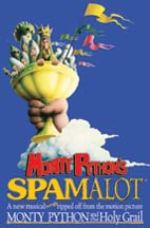
Musical
Original London
34) Spamalot (Original London)
Joué durant 2 ans 2 mois 2 semaines
Nb de représentations: 928 représentations
Première preview: 30 September 2006
Première: 16 October 2006
Dernière: 03 January 2009
Compositeur: Eric Idle • John Du Prez •
Parolier: Eric Idle • John Du Prez •
Libettiste: Eric Idle •
Metteur en scène: Mike Nichols •
Chorégraphe: Casey Nicholaw •
Avec: Tim Curry (King Arthur), Christopher Sieber (Sir Galahad), Tim Goodman-Hill (Sir Lancelot), Hannah Waddingham (Lady of the Lake), John Cleese (The Voice of God), Darren Southworth, David Birrell, Robert Hands, Tony Timberlake
Commentaire: A stage version “lovingly ripped off from” the 1975 Monty Python film, it opened on Broadway in March 2005 and received an astonishing 14 Tony Award nominations, winning three, including the Best Musical Award. It ran for 1,574 performances, and took over $175 million at the box office, closing January 11th 2009.
The London production opened in October 2006, with Tim Curry and Christopher Sieber repeating their Broadway roles. During the London run cast replacements included Simon Russell Beale, Peter Davison, Marin Mazzie and Sanjeev Bhaskar. The muchpraised Hannah Waddingham was replaced by Nina Soderquist , the winner of a Swedish TV “Search for a Star” competition. The London production closed on January 3rd 2009 a week earlier than the Broadway version. (plus)
Presse: PAUL TAYLOR for THE INDEPENDENT says, "Deliriously silly and loopily enjoyable evening." CHARLES SPENCER for THE DAILY TELEGRAPH says, "Mike Nichols directs an exuberantly inventive production in which the jokes, both visual and verbal, just keep on coming, creating a conspiracy of pleasure that often feels like the best pantomime you’ve ever seen...It’s a wonderful night" NICHOLAS DE JONGH for THE EVENING STANDARD says, "How sweet it also is to hear songs with silly lyrics that send up the style of instant moral uplift and dewyeyed yearning that characterise numbers from Rogers and Hammerstein to Andrew Lloyd Webber....Even describing the show as spoof, send-up, pantomime, musical comedy, satire and surreal farce does not altogether convey its weird, anarchic flavour. " MICHAEL BILLINGTON for THE GUARDIAN says, "In short, the show has its moments; and Tim Hatley's sets and costumes carefully preserve the air of a low-tech medieval pantomime...There simply comes a point when I, for one, weary of old jokes and tongue-in-cheek send-ups of Arthurian ideals and musical cliches. Irony has its place but it's not quite enough to sustain a whole evening. With hand on heart, I'd much rather watch Lerner and Loewe's Camelot than Eric Idle's smart-arsed Spamalot." BENEDICT NIGHTINGALE for THE TIMES says, "Cheerfully mischievous...Silly? Very. Funny? You bet."
Plus d'infos sur cette production:
Plus d'infos sur ce musical
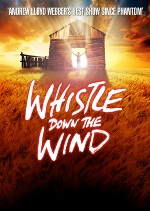
Musical
Revival
33) Whistle down the wind (Revival)
Joué durant 4 mois 2 semaines
Première preview: 15 March 2006
Première: 27 March 2006
Dernière: 12 August 2006
Compositeur: Andrew Lloyd Webber •
Parolier: Jim Steinman •
Libettiste: Gale Edwards • Patrica Knop •
Metteur en scène: Bill Kenwright •
Chorégraphe: Henry Metcalf •
Avec: Tim Rodgers (The Man), Claire Marlowe (Swallow), Emma Hopkins / Henrietta Touquet (Brat), Laurence Belcher/Christopher Thomas (Poor Baby), Garrie Harvey (Amos), Debbie Korley (Candy), Chris Holland (Snake Preacher), Kevin Curtin (Sheriff), David Robbins (Minister), Michael Howard Smith (Boone)
Commentaire: This revival was a kind of “fill-in” following the early withdrawal of “The Woman in White”. It was produced on a smaller-scale than the original (in spite of being in a much bigger theatre). This new production was felt to be far less pretentious, simpler, stronger and more heartfelt than the original. (plus)
Presse:
Plus d'infos sur cette production:
Plus d'infos sur ce musical
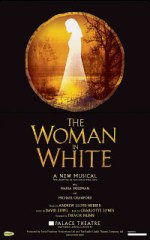
Musical
Original
32) Woman in White (The) (Original)
Joué durant 1 an 5 mois 1 semaine
Première preview: 28 August 2004
Première: 15 September 2004
Dernière: 25 February 2006
Compositeur: Andrew Lloyd Webber •
Parolier: David Zippel •
Libettiste: Charlotte Jones •
Metteur en scène: Trevor Nunn •
Chorégraphe: Wayne McGregor •
Avec: Martin Crewes (Walter Hartwright), Angela Christian (Anne Catherick), Maria Friedman (Marian Halcombe), Jill Paice (Laura Fairlie), Edward Petherbridge (Mr Fairlie), Oliver Darley (Sir Percial Glyde), Michael Crawford (Count Fosco)
Commentaire: The show opened to luke-warm reviews with much criticism of the set design - a series of projections said to be dizzying, out of focus, and out of synch with the revolve. After four months Michael Crawford collapsed (as a result of over-sweating in the fat suit he wore to play Count Fosco) and his understudy, Steve Vamom, took over for several weeks. From February to April 2005 the role of Count Fosco was then played by Michael Ball, in a radically new interpretation of the part. From April onwards Fosco was played by Anthony Andrews.
The “original” version of the show closed on July 9th, and two days later re-opened with many cast changes and a heavily re-written libretto and song-order. This “new” version previewed through the summer with the Press invited to review the show in September - at which point Simon Callow became the fifth actor to play Count Fosco. This time the critics were a little more enthusiastic and the projections and revolving effects were said to be much better. However, the show closed on February 25th 2006 after a 19 month run and its 500th performance. (plus)
Presse: MICHAEL BILLINGTON du THE GUARDIAN: "Andrew Lloyd Webber's best score in years and Trevor Nunn's visually vibrant production can disguise the fact that this show is saddled with an impossible book."
CHARLES SPENCER du THE DAILY TELEGRAPH : "A terrible disappointment.....Yes, there are moments when Lloyd Webber comes up with the big lush romantic melodies that are his forte, though these days they tend to sound alarmingly like retreads of his own earlier work."
PAUL TAYLOR du THE INDEPENDENT : " Fluent production....I suspect The Woman In White will be haunting the West End for some time to come."
NICHOLAS DE JONGH du THE EVENING STANDARD : "So old-fashioned it deserves to be stuffed and displayed in a museum for deceased musicals... I came out humming with boredom."
BENEDICT NIGHTINGALE du THE TIMES: "Why...doesn’t The Woman in White leap from the stage of the smartly refurbished Palace with the panache I’d hoped?...This lady is too pale and plump for thrills."
QUENTIN LETTS du THE DAILY MAIL: "Lloyd Webber's music, never before so classical and operatic, becomes hypnotic and slowly unveils its melodies. You have to work for it but it's worth it."
SARAH HEMMING du THE FINANCIAL TIMES : "There are not many take-home tunes and David Zippel's lyrics are often bland. Still, as a gorgeous-looking piece of daft escapism, it works a treat."
PETER HEPPLE du THE STAGE : "Lloyd Webber can still write a good tune but it invariably echoes some of those he has written previously."
JANE EDWARDES du TIME OUT : "For all its good points, I fear there is no enough here to add up to a hit."
Plus d'infos sur cette production:
Plus d'infos sur ce musical
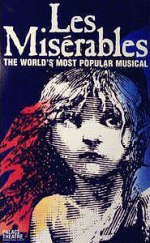
Musical
Original
31) Misérables (Les) (Original)
Joué durant 18 ans 3 mois 4 semaines
Première preview: Inconnu
Première: 04 December 1985
Dernière: 27 March 2004
Fait partie de: London Run
Compositeur: Claude-Michel Schonberg •
Parolier: Alain Boublil • Jean-Marc Natel •
Libettiste: Alain Boublil • Jean-Marc Natel •
Metteur en scène: Trevor Nunn • John Caird •
Chorégraphe: Kate Flatt •
Avec:
Commentaire:
Presse:
Plus d'infos sur cette production:
Plus d'infos sur ce musical
Parolier: Alain Boublil • Jean-Marc Natel •
Libettiste: Alain Boublil • Jean-Marc Natel •
Metteur en scène: Trevor Nunn • John Caird •
Chorégraphe: Kate Flatt •
Avec:
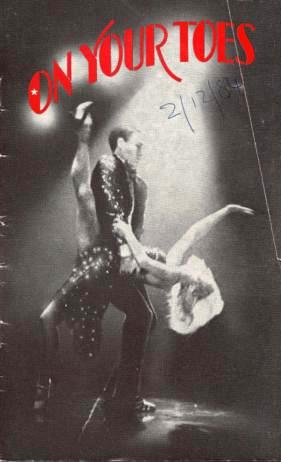
Musical
Revival
30) On your toes (Revival)
Joué durant 1 an 3 mois 1 semaine
Nb de représentations: 539 représentations
Première preview: 12 June 1984
Première: 12 June 1984
Dernière: 21 September 1985
Compositeur: Richard Rodgers •
Parolier: Lorenz M. Hart •
Libettiste: Geoffrey Abbott • Richard Rodgers •
Metteur en scène: George Abbott •
Chorégraphe: George Balanchine •
Avec: Natalia Markarova (Vera Baronova), Tim Flavin (Junior), Siobhan McCarthy (Frankie), Kevin Owers (Sidney Cohn), Honor Blackman (Peggy Porterfield), John Bennett (Sergei), Nicholas Johnson (Konstantine Morrosine), Doreen Hermitage, Bunny May, Petra Siniawski
Commentaire: La production originale de Broadway (1936) et la production londonienne (5 février 1937 au Coliséum) sont toutes deux mises en scène par George Abbott. Le spectacle a été repris à Broadway en 1983 avec Natalia Makarova - encore une fois mis en scène par George Abbott - et une fois de plus il est venu à Londres pour superviser cette production. Non seulement était-ce une sorte de manière de redonner vie à son propre travail après 47 ans d’absence, mais à l’époque de ce spectacle, il avait 97 ans, et c’était certainement le plus vieux metteur en scène de théâtre musical. (Il est décédé en 1995, quelques mois avant son 108e anniversaire.) (plus)
Presse:
Plus d'infos sur cette production:
Plus d'infos sur ce musical

Musical
Original
29) Song and Dance (Original)
Joué durant 1 an 11 mois 4 semaines
Nb de représentations: 781 représentations
Première preview: 26 March 1982
Première: 07 April 1982
Dernière: 31 March 1984
Compositeur: Andrew Lloyd Webber •
Parolier: Don Black •
Libettiste:
Metteur en scène: John Caird •
Chorégraphe: Anthony Van Laast •
Avec: Marti Webb & Wayne Sleep
with Linda-Mae Brewer, Jane Darling, Andrea Durant, Linda Gibbs, Claude-Paul Henry, Andy Norman, Sandy Strallen, Paul Tomkinson
Commentaire: This was a show in two parts. The “song” half was a song-cycle called “Tell Me on a Sunday” - a simple tale of a young English woman in New York and the trials and tribulations she experiences through a series of unhappy love affairs. This was performed by Marti Webb. The second half was called “Variations”, a suite of variations on a theme by Paganini, and was interpreted in dance by Wayne Sleep and a team of eight dancers. (During the long run the Marti Webb role was taken over by Gemma Craven, Lulu and Liz Robertson. Wayne Sleep’s role was later danced by Stephen Jeffries, Graham Fletcher, John Meehan and Paul Tomkinson) (plus)
Presse:
Plus d'infos sur cette production:
Plus d'infos sur ce musical

Musical
Original
28) Tell me on A Sunday (Original)
Joué durant 1 an 11 mois 4 semaines
Nb de représentations: 781 représentations
Première preview: 26 March 1982
Première: 07 April 1982
Dernière: 31 March 1984
Compositeur: Andrew Lloyd Webber •
Parolier: Don Black •
Libettiste:
Metteur en scène: Richard Jr Maltby •
Chorégraphe:
Avec:
Commentaire:
Presse:
Plus d'infos sur cette production:
Plus d'infos sur ce musical
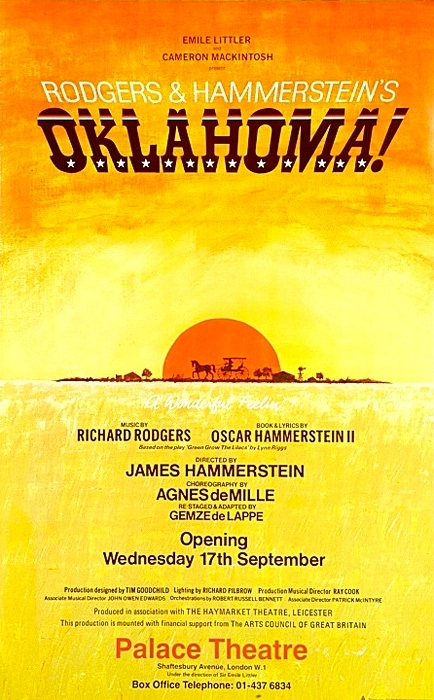
Musical
Revival
27) Oklahoma! (Revival)
Joué durant 1 an
Première preview: Inconnu
Première: 17 September 1980
Dernière: 19 September 1981
Compositeur: Richard Rodgers •
Parolier: Oscar Hammerstein II •
Libettiste: Oscar Hammerstein II •
Metteur en scène: James Hammerstein •
Chorégraphe: Agnès de Mille •
Avec: Madge Ryan (Aunt Eller), John Diedrich (Curly), Rosamund Shelley (Laurey), Mark White ( Will Parker), Jillian Mack (Ado Annie), Alfred Molina (JudFry)
Commentaire: Cette version a été produite par Cameron Mackintosh et Emile Littler en association avec le Haymarket Theatre, Leicester avec le soutien financier du Arts Council of Great Britain.
Signalons que cette production marque les débuts professionnels de Maria Friedman. Elle a joué dans l'ensemble et a été l'understudy de 'Ado Annie' et 'Laurey'. (plus)
Presse:
Plus d'infos sur cette production:
Plus d'infos sur ce musical
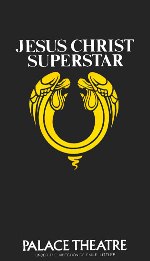
Musical
Original London
26) Jesus-Christ Superstar (Original London)
Joué durant
Nb de représentations: 3358 représentations
Première preview: 09 August 1972
Première: 09 August 1972
Dernière: Inconnu
Compositeur: Andrew Lloyd Webber •
Parolier: Tim Rice •
Libettiste:
Metteur en scène: Jim Sharman •
Chorégraphe:
Avec:
Commentaire:
Presse:
Plus d'infos sur cette production:
Plus d'infos sur ce musical
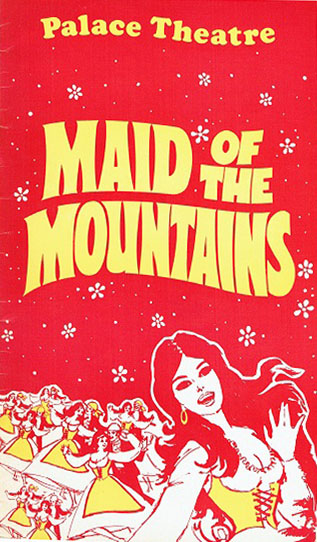
Musical
Revival
25) Maid of the Mountains (The) (Revival)
Joué durant
Nb de représentations: 96 représentations
Première preview: 29 April 1972
Première: 29 April 1972
Dernière: Inconnu
Compositeur: Harold Fraser-Simon •
Parolier: Harry Graham •
Libettiste: Frédéric Lonsdale •
Metteur en scène: Emilie Littler •
Chorégraphe:
Avec: Lynne Kennington (Teresa), Gordon Clyde (Baldassare), Neville Jason (Beppo), Jimmy Thompson (Antonio), Janet Mahoney (Vittoria) , Jimmy Edwards (General Malona), Susan Maudsley (Angela Malona)
Commentaire:
Presse:
Plus d'infos sur cette production:
Plus d'infos sur ce musical
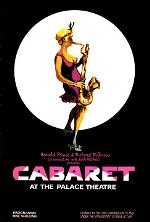
Musical
Original London
24) Cabaret (Original London)
Joué durant
Nb de représentations: 336 représentations
Première preview: Inconnu
Première: 26 February 1968
Dernière: Inconnu
Compositeur: John Kander •
Parolier: Fred Ebb •
Libettiste: Joe Matseroff •
Metteur en scène: Harold Prince •
Chorégraphe:
Avec:
Commentaire:
Presse:
Plus d'infos sur cette production:
Plus d'infos sur ce musical
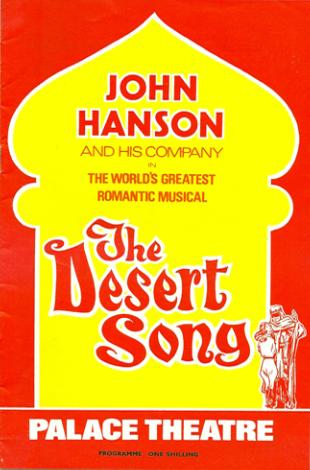
Musical
Revival
23) Desert Song (The) (Revival)
Joué durant
Première preview: 13 May 1967
Première: 13 May 1967
Dernière: Inconnu
Compositeur: Sigmund Romberg •
Parolier: Otto Harbach •
Libettiste: Frank Mandel • Oscar Hammerstein II • Otto Harbach •
Metteur en scène: ???? ???? •
Chorégraphe: ???? ???? •
Avec: Sid El Kar … Dermod Gloster
Hadji … J. Colin Dudley
Neri … Rae Armond
Benjamin Kidd … Tony Hughes
Captain Paul Fontaine … Raymond Duparc
Margot Bonvalet … Patricia Michael
General Birabeau … Martin Carroll
Pierre Birabeau … John Hanson
Susan … Doreen Kay
Edith … Joanna Young
Azuri … Lita Scott
Ali Ben Ali … George Hancock
Clementina … Carol Dorée
Mindar … Arnold Chazen
Hassi … Victor Flattery
Lieutenant La Vergne … Chris Robson
Sergeant De Boussac … Robert Crane
Commentaire:
Presse:
Plus d'infos sur cette production:
Plus d'infos sur ce musical

Musical
Original London
22) 110 in the shade (Original London)
Joué durant
Nb de représentations: 101 représentations
Première preview: 08 February 1967
Première: 08 February 1967
Dernière: Inconnu
Compositeur: Harvey Schmidt •
Parolier: Tom Jones •
Libettiste: Richard Nash •
Metteur en scène: Emilie Littler •
Chorégraphe: ???? ???? •
Avec:
Commentaire:
Presse:
Plus d'infos sur cette production:
Plus d'infos sur ce musical
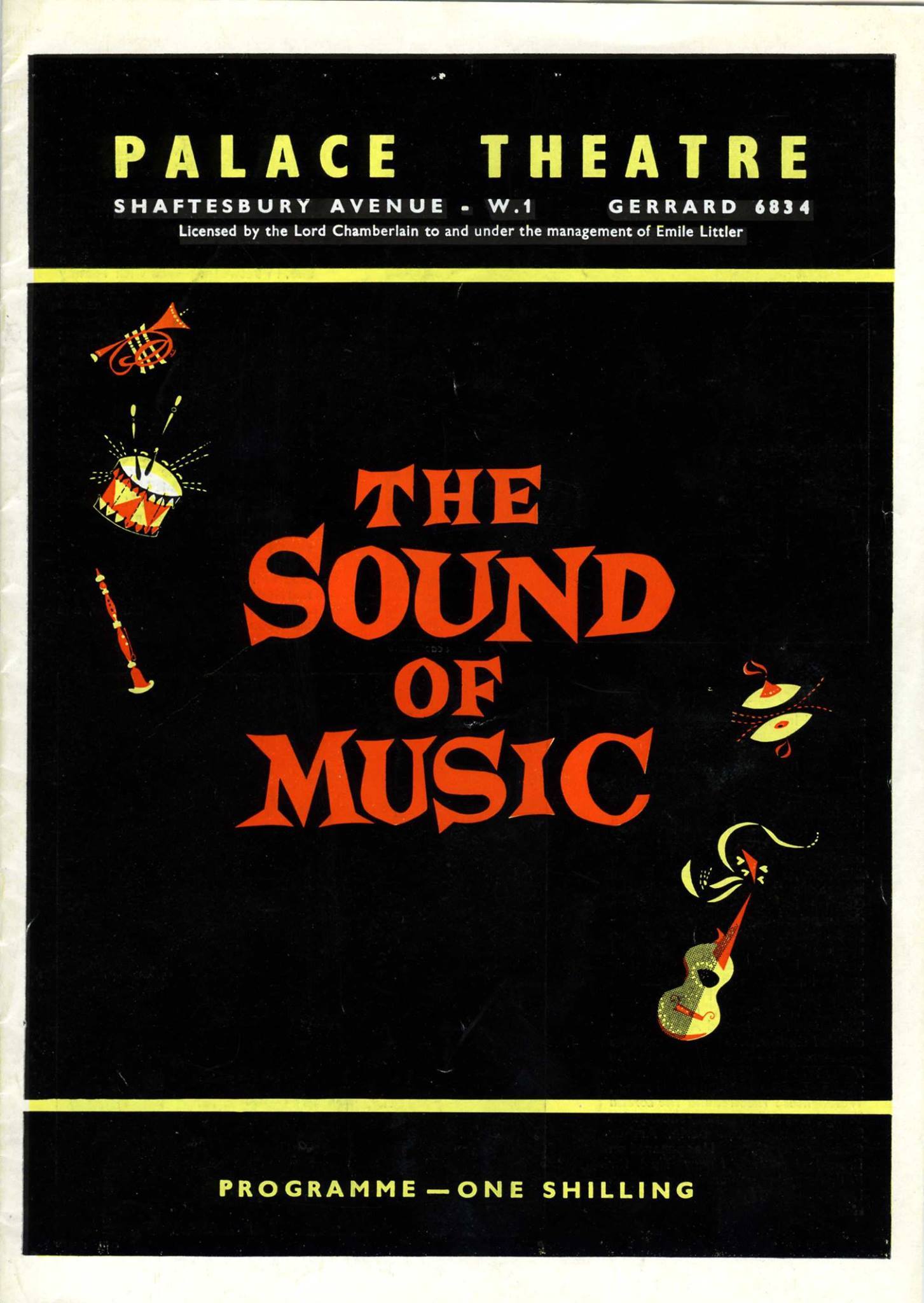
Musical
Original London
21) Sound of Music (The) (Original London)
Joué durant 5 ans 8 mois
Nb de représentations: 2385 représentations
Première preview: 18 May 1961
Première: 18 May 1961
Dernière: 14 January 1967
Compositeur: Richard Rodgers •
Parolier: Oscar Hammerstein II •
Libettiste: Howard Lindsay • Russel Crouse •
Metteur en scène: Jerome Whyte •
Chorégraphe: Joe Layton •
Avec: Jean Bayless (Maria Rainer, a Postulant at Nonnberg Abbey), Constance Shacklock (The Mother Abbess), Roger Dann (Captain Georg von Trapp), Barbara Brown (ii) (Liesl), Nicholas Bennett (RoIf Gruber), Eunice Gayson (Elsa Schraeder), Harold Kasket (Max Detweiler), Silvia Beamish (Sister Berthe, Mistress of Novices), Olive Gilbert (Sister Margaretta, Mistress of Postulants), Lynn Kennington (Sister Sophia)
Commentaire:
Presse:
Plus d'infos sur cette production:
Plus d'infos sur ce musical
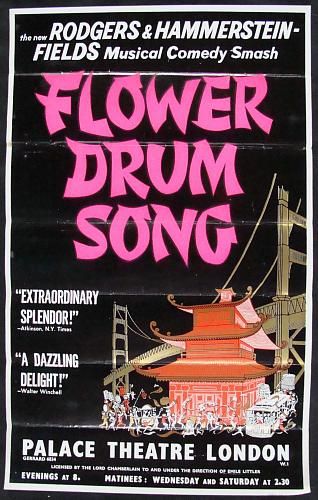
Musical
Original
20) Flower drum song (Original)
Joué durant
Nb de représentations: 464 représentations
Première preview: 24 March 1960
Première: 24 March 1960
Dernière: Inconnu
Compositeur: Richard Rodgers •
Parolier: Oscar Hammerstein II •
Libettiste: Joseph Fields • Oscar Hammerstein II •
Metteur en scène: Gene Kelly • Jerome Whyte •
Chorégraphe:
Avec: Yau Shan Tung (Mei Li), Yama Saki (Linda Low), Tim Herbert (Sammy Fong), Ida Shepley (Madam Liang), Kevin Scott (Wang-Ta)
Commentaire:
Presse:
Plus d'infos sur cette production:
Plus d'infos sur ce musical
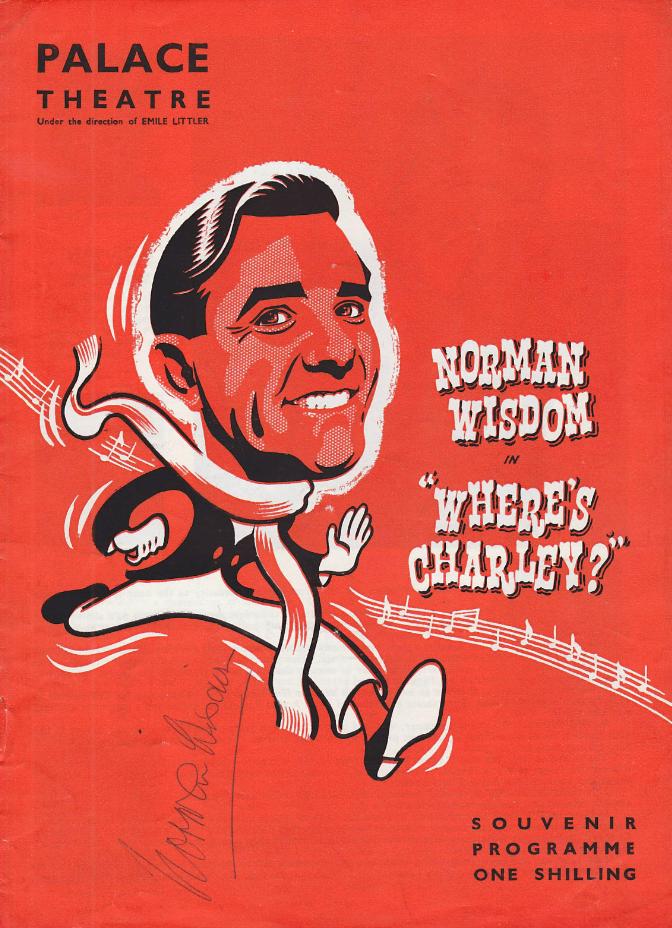
Musical
Original London
19) Where's Charley? (Original London)
Joué durant
Nb de représentations: 404 représentations
Première preview: 20 February 1958
Première: 20 February 1958
Dernière: Inconnu
Compositeur: Frank Loesser •
Parolier: Frank Loesser •
Libettiste: George Abbott •
Metteur en scène: William Chappell •
Chorégraphe:
Avec: Norman Wisdom (Charley Wykeham), Pip Hinton (Amy Spettigue), Terence Cooper (Jack Chesney), Pamela Gale (Kitty Verdun), Jerry Desmonde (Sir Francis Chesney), Felix Felton (Mr. Spettigue)
Commentaire:
Presse:
Plus d'infos sur cette production:
Plus d'infos sur ce musical
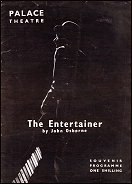
Théâtre
West End Transfer
18) Entertainer (The) (West End Transfer)
Joué durant 4 mois 1 semaine
Nb de représentations: 116 représentations
Première preview: Inconnu
Première: 10 September 1957
Dernière: 10 January 1958
Compositeur: *** Divers •
Parolier: *** Divers •
Libettiste: *** Divers •
Metteur en scène: Tony Richardson •
Chorégraphe:
Avec: George Relph (Billy), Dorothy Tutin (replaced by Joan Plowright when the play moved to the West End) (Jean), Brenda De Banzie (Phoebe), Laurence Olivier (Archie), Richard Pasco (Frank), Vivienne Drummond (Gorgeous Gladys), Aubrey Dexter (Brother Bill), Stanley Meadows (Graham)
Commentaire: "The Entertainer" a été une véritable relance de la carrière exceptionnelle de Laurence Olivier.
En septembre 1957, le spectacle sera transféré au Palace Theatre dans le West End, puis partira en tournée avant de revenir au Palace Theatre. Et de partir à Broadway. (plus)
Presse: Dans The Observer, Kenneth Tynan a écrit, «M. Osborne a eu la grande et brillante idée de mettre l'ensemble de l'Angleterre contemporaine sur une même scène... Il a choisi, comme son microcosme national, une famille de d'acteur de vaudevilles délabrés. Grand-papa, majestueux et à la retraite, représente la bienveillance edwardienne, pour lequel M. Osborne a une profonde nostalgie. Mais le personnage clé est papa, un danseur et chanteur de cinquante ans réduit à apparaître deux fois chaque soir dans une revue nue.» La critique du The Manchester Guardian était tiède, trouvant le point culminant de la pièce «banal» mais ajoutait «Sir Laurence apporte au héros malheureux un merveilleux pathos drôle avant de lui donner, çà la fin, et une certaine dimension tragique. Ce n'est pas une grande pièce mais pas non plus une mauvaise soirée.» Le The Times n'a fait aucun lien entre la pièce et la situation post-impériale de la Grande-Bretagne, considérant l'œuvre presque comme un «équivalent sombre et moderne de Trelawny of the Wells de Pinero.» Vingt ans plus tard, à l'occasion d'un revival en 1974, The Times a été d'accord avec Tynan: «Tout le monde se souvient de The Entertainer pour sa brillante assimilation de la Grande-Bretagne à un vieux music-hall délabré,» mais il a ajouté que la pièce était également «une des meilleures pièces de famille de notre répertoire.»
Plus d'infos sur cette production:
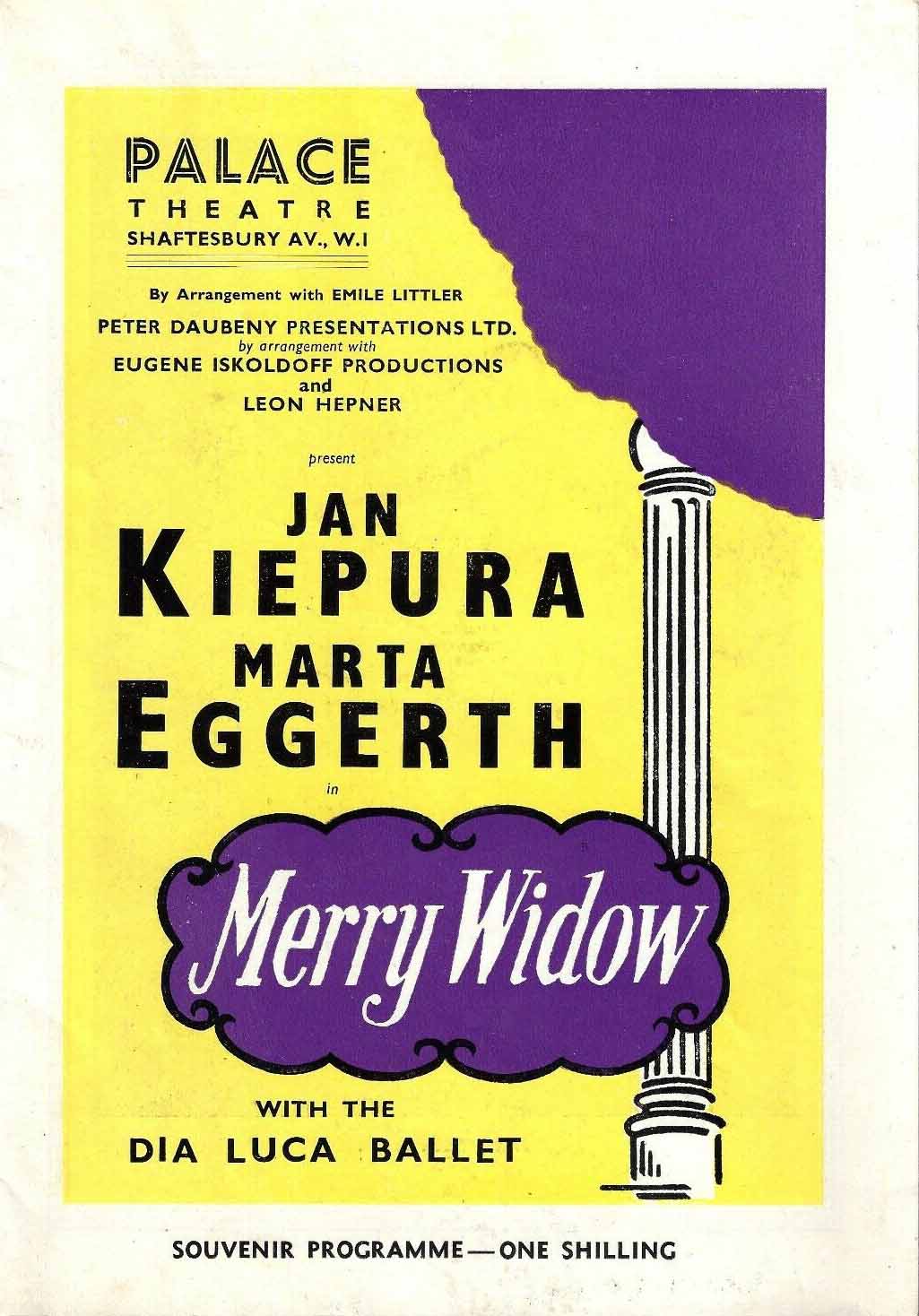
Opérette
Revival
17) Merry Widow (The) (Revival)
Joué durant 4 semaines
Nb de représentations: 63 représentations
Première preview: 03 May 1955
Première: 03 May 1955
Dernière: June 1955
Compositeur: Franz Lehar •
Parolier: Christopher Hassall •
Libettiste:
Metteur en scène:
Chorégraphe:
Avec: Marta Eggerth (Hanna Glawari), Jan Kiepura (Count Danilo), Fritz Diestel (Baron Zeta), Franzi Wachmann (Valencienne)
Commentaire: Marta Eggerth et Jan Kiepura étaient mari et femme – elle était hongroise et il était polonais – et ils étaient très populaire dans le monde de l’opéra, des salles de concert et de cinéma. Ils étaient très aimés dans toute l’Europe, aux Etats-Unis et au Canada et étaient particulièrement pour « The Merry Widow ». Ils l’ont joué plus de 200 fois dans quatre langues différentes – l’anglais, le français, l'allemand et l'italien. Cette série londonienne limitée au Palace Theatre faisait partie d’une tournée européenne. (plus)
Presse:
Plus d'infos sur cette production:
Plus d'infos sur ce musical
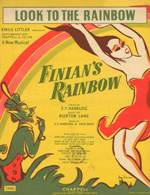
Musical
Original London
16) Finian's Rainbow (Original London)
Joué durant
Première preview: 21 October 1947
Première: 21 October 1947
Dernière: Inconnu
Compositeur: Burton Lane •
Parolier: E.Y. Harburg •
Libettiste: E.Y. Harburg • Fred Saidy •
Metteur en scène:
Chorégraphe:
Avec:
Commentaire:
Presse:
Plus d'infos sur cette production:
Plus d'infos sur ce musical
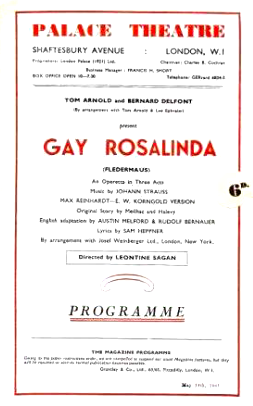
Opérette
Revival
15) Fledermaus (Die) (Revival)
Joué durant
Nb de représentations: 412 représentations
Première preview: 08 March 1945
Première: 08 March 1945
Dernière: Inconnu
Compositeur: Johann Strauss II •
Parolier: Richard Genée •
Libettiste: Carl Haffner • Richard Genée •
Metteur en scène: Bernard Delfont • Leontine Sagan •
Chorégraphe: Wendy Toye •
Avec: Cyril Ritchard (Baron von Eisenstein), Ruth Naylor (Rosalinda), Peter Graves (Orlofsky), Bernard Clifton (Dr Falke), James Etherington (Alfred), Jay Laurier (Frosch)
Commentaire: On April 5th 1874 Vienna’s Theater an der Wien saw the premiere of “Die Fledermaus” with music by Johann Strauss II. It was based on a French play by Meilhac & Halevy and set to a German libretto by Karl Haffner & Richard Genee. It was soon recognised as the greatest of all Viennese operettas to date and it remains the golden standard by which all other operettas are measured even today.
By the end of that same year it had been performed in New York, and it first appeared in London at the Alhambra on December 18th 1876 in a rather heavily adapted version. In the early years of the 20th Century it began to appear in the repertoire of the world’s great opera houses, and was first performed at the Royal Opera House, Covent Garden in 1931.
In 1942 the famous German director, Max Reinhardt, staged a revival on Broadway under the title “Rosalinda”, and this was a triumph, running for 502 performances. This version, with musical arrangements by Erich Korngold was adapted for London by Austin Melford and Rudolf Bemauer - and was a great success, running for a year, closing on March 2nd 1946. (plus)
Presse:
Plus d'infos sur cette production:
Plus d'infos sur ce musical

Musical
Revival
14) Chu Chin Chow (Revival)
Joué durant 4 mois
Nb de représentations: 158 représentations
Première preview: 22 July 1941
Première: 22 July 1941
Dernière: 22 November 1941
Compositeur: Frederic Norton •
Parolier: Oscar Ashe •
Libettiste: Oscar Ashe •
Metteur en scène: Nigel Ferguson •
Chorégraphe: Michael Martin-Harvey • Katya Burina •
Avec: Peter Bennett, Kay Bourne, Marjorie Brown, Rosalinde Fuller, Jill Hands, Lyn Harding, Mr Jetsam, Katie Kemp, Noel Leyland, Henry Luscombe, Michael Martin-Harvey, Raymond Rollett, Jerry Verno, Dorothy Vernon, Albert Ward, Edith Woods
Commentaire: This revival at the Palace Theatre in July 1940 was withdrawn two months later because of the Blitz. It returned in July the following year and played till November. (plus)
Presse:
Plus d'infos sur cette production:
Plus d'infos sur ce musical

Musical
Revival
13) Chu Chin Chow (Revival)
Joué durant 2 mois 1 semaine
Nb de représentations: 80 représentations
Première preview: 03 July 1940
Première: 03 July 1940
Dernière: 10 September 1940
Compositeur: Frederic Norton •
Parolier: Oscar Ashe •
Libettiste: Oscar Ashe •
Metteur en scène: Nigel Ferguson •
Chorégraphe: Michael Martin-Harvey • Katya Burina •
Avec: Lyn Harding (Hasan), Rosalinde Fuller (Zahrat), Jerry Verno (Ali), Lev Bario, Peter Bennett, Kay Bourne, Marjorie Brown, Bruce Dargavel, Sydney Fairbrother, Clement Hamelin, Jill Hands, Katie Kemp, Tom Kinniburgh, Dennis Noble, Raymond Rollett, Hugh Thurston, Dorothy Vernon
Commentaire: This revival at the Palace Theatre in July 1940 was withdrawn two months later because of the Blitz. It returned in July the following year and played till November. (plus)
Presse:
Plus d'infos sur cette production:
Plus d'infos sur ce musical
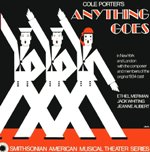
Musical
Original London
12) Anything goes (Original London)
Joué durant
Nb de représentations: 261 représentations
Première preview: Inconnu
Première: 14 June 1935
Dernière: Inconnu
Compositeur: Cole Porter •
Parolier: Cole Porter •
Libettiste: Guy Bolton • P.G. Wodehouse •
Metteur en scène: Howard Lindsay •
Chorégraphe: Robert Alton •
Avec:
Commentaire:
Presse:
Plus d'infos sur cette production:
Plus d'infos sur ce musical

Revue
Original
11) Co-Optimists (The) of 1935 (Original)
Joué durant 1 semaine
Nb de représentations: 13 représentations
Première preview: 01 May 1935
Première: 01 May 1935
Dernière: 11 May 1935
Compositeur: *** Divers •
Parolier: *** Divers •
Libettiste: *** Revue •
Metteur en scène:
Chorégraphe:
Avec: Davy Burnaby, Harry Milton, Marriott Edgar, Rex London, Michael North. Ivy Tresmand, Vera Lennox, Luella Paikin, Muriel Montrose, Jacqueline.
Commentaire:
Presse:
Plus d'infos sur cette production:
Plus d'infos sur ce musical
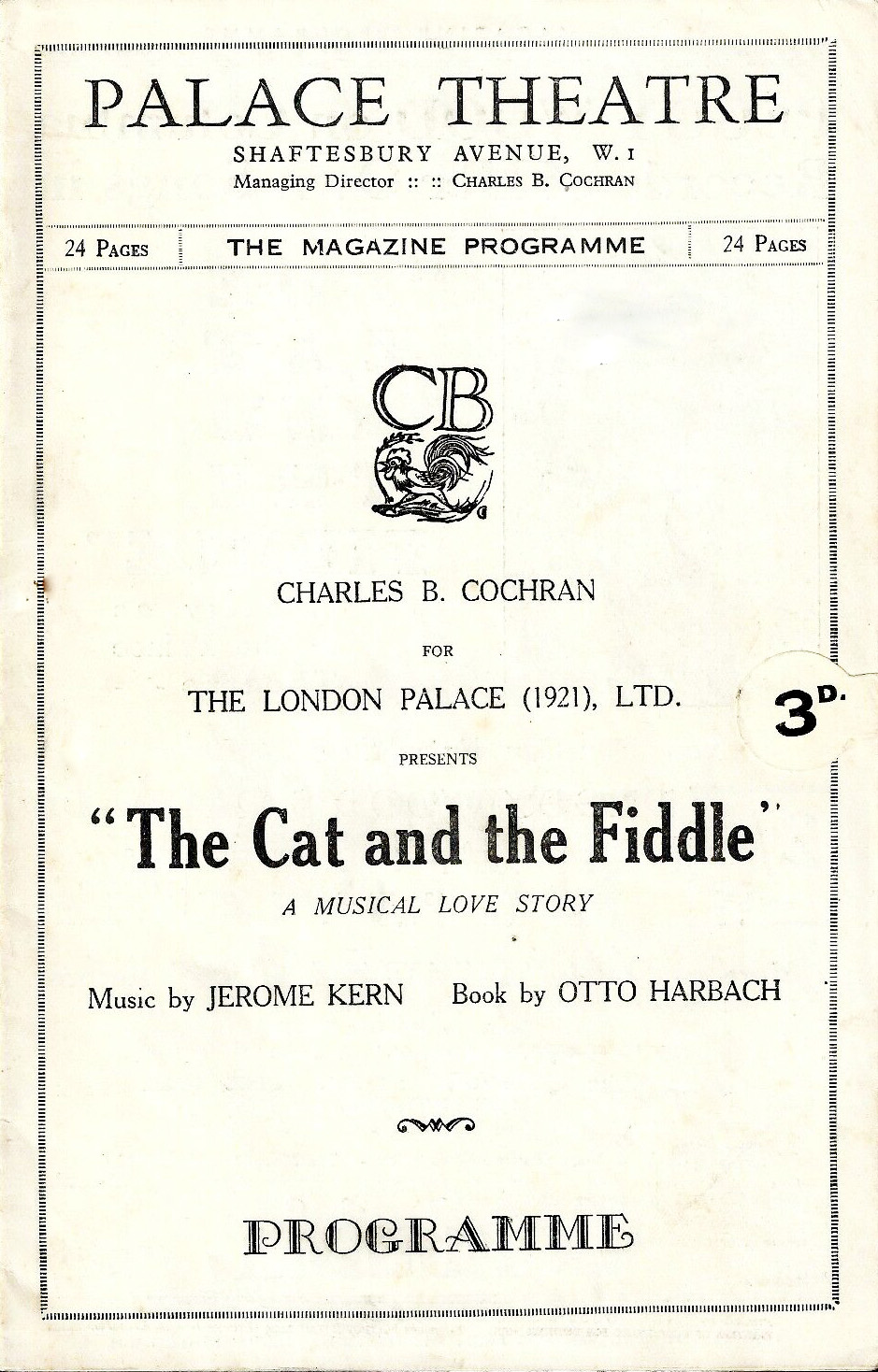
Musical
Original London
10) Cat and the Fiddle (The) (Original London)
Joué durant
Nb de représentations: 219 représentations
Première preview: 04 March 1932
Première: 04 March 1932
Dernière: Inconnu
Compositeur: Jerome Kern •
Parolier: Otto Harbach •
Libettiste: Otto Harbach •
Metteur en scène: William Mollison •
Chorégraphe: Buddy Bradley •
Avec: Francis Lederer (Victor Florescu), Peggy Wood (Shirley Sheridan), Fred Conyngham (Alexander Sheridan), Gina Malo (Angie Sheridan), Austin Trevor (Clement Daudet), Henri Leoni (Pompineau), Martin Walker (Major Chatterley), Alice Delysia (Alice), Babs Valerie (Maizie Gripps)
Commentaire: It was much praised during its London presentation. (plus)
Presse:
Plus d'infos sur cette production:
Plus d'infos sur ce musical

Musical
Original London
9) Heads Up! (Original London)
Joué durant 2 semaines
Nb de représentations: 20 représentations
Première preview: 01 May 1930
Première: 01 May 1930
Dernière: May 1930
Compositeur: Richard Rodgers •
Parolier: Lorenz M. Hart •
Libettiste: John McGowan • Paul Gerard Smith •
Metteur en scène: Harry Howell •
Chorégraphe:
Avec: Sydney Howard (Skippy Duggan), Janet Velie (Martha Trumbell), Edmund Willard (Captain Denny), Clarice Hardwick (Betty Boyd), Harland Dixon (George), Louise Brown (Mary), Jack Hobbs (Rex Cutting), Arthur Margetson (Lt. Jack Mason)
Commentaire: La production londonienne fut un flop complet. Les critiques et le public sont restés insensibles faces aux sages personnages cinglés et cyniques. En outre, le public londonien ne s’intéressait pas à l’histoire de la prohibition. La sentiment général était: «Trop américain». (plus)
Presse:
Plus d'infos sur cette production:
Plus d'infos sur ce musical

Musical
Original
8) Dear Love (Original)
Joué durant 3 mois 3 semaines
Nb de représentations: 132 représentations
Première preview: 14 November 1929
Première: 14 November 1929
Dernière: 08 March 1930
Compositeur: Haydn Wood • Jack Waller • Joseph Tunbridge •
Parolier: Dion Titheradge • Herbert Clayton • Lauri Wylie •
Libettiste: Dion Titheradge • Herbert Clayton • Lauri Wylie •
Metteur en scène: William Mollison •
Chorégraphe: Ralph Reader •
Avec: Annie Croft (Suzanne), Sydney Howard (Maurice), Tom Burke (Pierre), Ena Grossmith (Marie), Claude Hulbert (Peter Twigley), Vera Pearce, Luise Blackburn
Commentaire:
Presse:
Plus d'infos sur cette production:
Plus d'infos sur ce musical

Musical
Original
7) Virginia (Original)
Joué durant 6 mois 2 semaines
Nb de représentations: 227 représentations
Première preview: 24 October 1928
Première: 24 October 1928
Dernière: 11 May 1929
Compositeur: Jack Waller •
Parolier: Douglas Furber • Herbert Clayton •
Libettiste: Douglas Furber • Herbert Clayton •
Metteur en scène: William Mollison •
Chorégraphe:
Avec: Avec: Emma Haig (Virginia), John Kirby (Silas J. Hock), Harold French (Lord Hampton), Marjorie Gordon (Lady Hampton), George Gee (Nicholas Ninnijohn), Ernest Trimingham (Sambo), Cora La Redd (Lizzie), Jimmie Fergusson (Caesar), Walter Richardson (Uncle New)
Commentaire:
Presse:
Plus d'infos sur cette production:
Plus d'infos sur ce musical
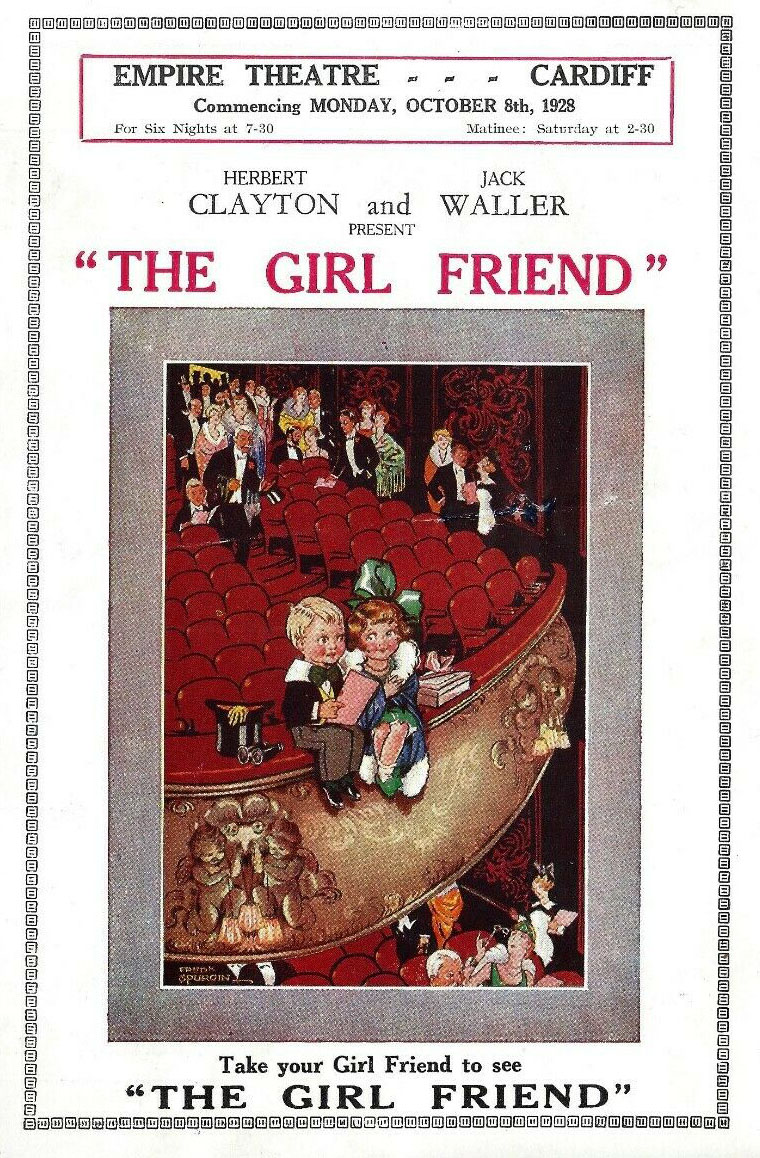
Musical
Original London
6) Girl Friend (The) (Original London)
Joué durant 1 an
Nb de représentations: 421 représentations
Première preview: 08 September 1927
Première: 08 September 1927
Dernière: 08 September 1928
Compositeur: Richard Rodgers •
Parolier: Lorenz M. Hart •
Libettiste: Herbert Fields •
Metteur en scène: William Mollison •
Chorégraphe:
Avec: Louise Brown (Kitty), Roy Royston (Robert Mason), Clifford Mollison (Richard Dennison), Emma Haig (Jennie), George Gee (Jerry), Sara Allgood (Mrs Burke), Sebastian Smith (Mr Burke), Hall Willis (Lift Boy).
Commentaire:
Presse:
Plus d'infos sur cette production:
Plus d'infos sur ce musical

Musical
Original London
5) Princess Charming (Original London)
Joué durant 9 mois 2 semaines
Nb de représentations: 361 représentations
Première preview: 21 October 1926
Première: 21 October 1926
Dernière: 03 August 1927
Compositeur: Dr. Albert Szirmai •
Parolier: Arthur Wimperis •
Libettiste:
Metteur en scène: William Mollison •
Chorégraphe:
Avec: Winnie Melville (Princess Elaine), Edmund Willard (Lieut. Ivanoff), W.H. Berry (Albert Chuff), George Grossmith (King Christian), John Clarke (Captain Torelli), Alice Delysia (Wanda Navarro), Bernard Clifton, Charles Penrose
Commentaire:
Presse:
Plus d'infos sur cette production:
Plus d'infos sur ce musical
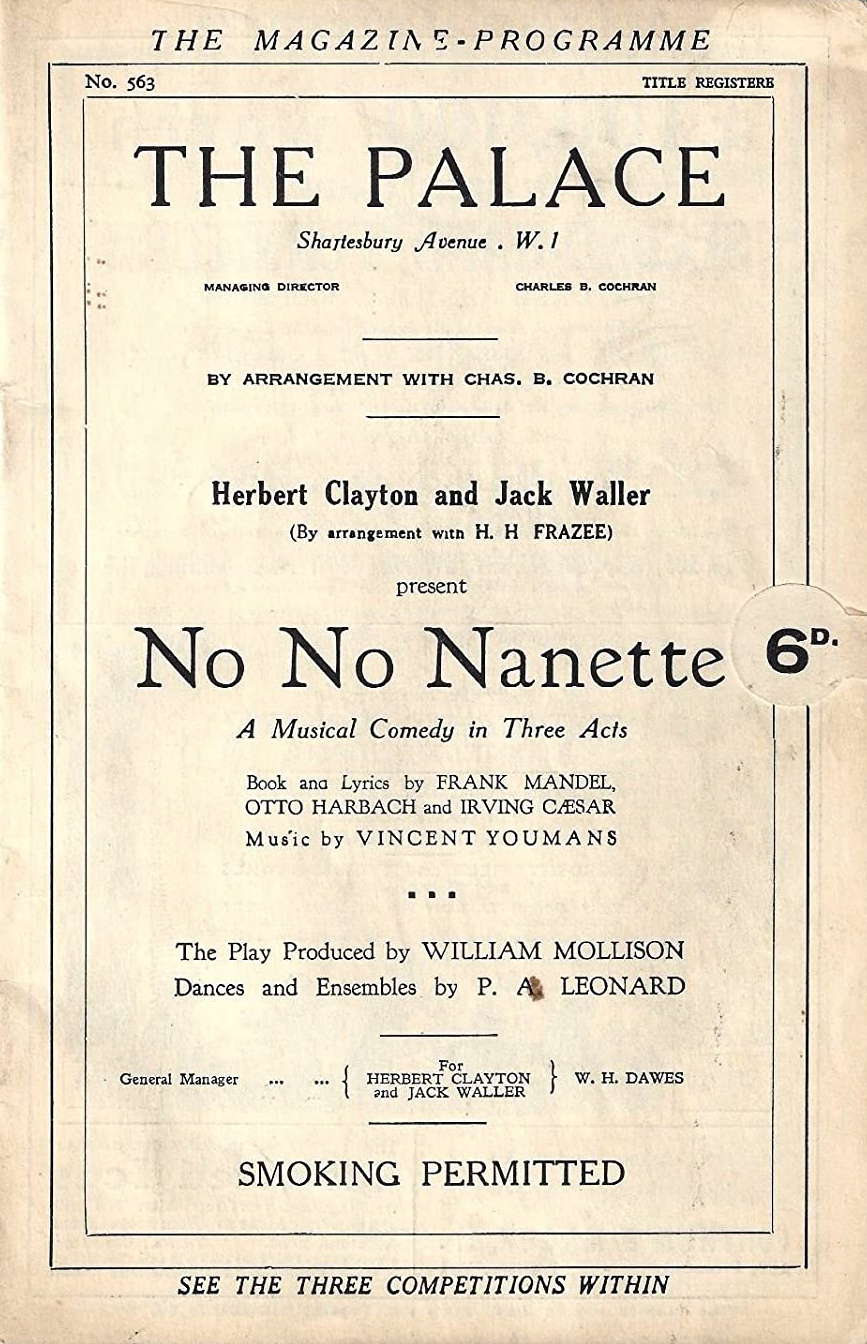
Musical
Original London
4) No, No, Nanette (Original London)
Joué durant 1 an 7 mois 1 semaine
Nb de représentations: 665 représentations
Première preview: 11 March 1925
Première: 11 March 1925
Dernière: 16 October 1926
Compositeur: Vincent Youmans •
Parolier: Irvin Caesar • Otto Harbech •
Libettiste: Frank Mandel • Otto Harbech •
Metteur en scène: William Mollison •
Chorégraphe: Patrick Leonard •
Avec: Binnie Hale (Nanette), Joseph Coyne (Jimmy Smith), Marie Hemingway (Sue Smith), Irene Browne (Lucille Early), George Grossmith (Billy Early), Gracie Leigh (Pauline), Seymour Beard (Tom Trainor
Commentaire: La production originale était bloquée dans un pre-Broadway Tour aux États-Unis avec de nombreuses réécritures et re-casting, retardant la création à Broadway. Pour cette raison, cette production a ouvert au Palace Theatre de Londres avant celle de Broadway. La série de Londres a duré 665 représentations – deux fois la série de New York – lorsque le spectacle a finalement atteint Broadway six mois après la première à Londres. (plus)
Presse:
Plus d'infos sur cette production:
Plus d'infos sur ce musical
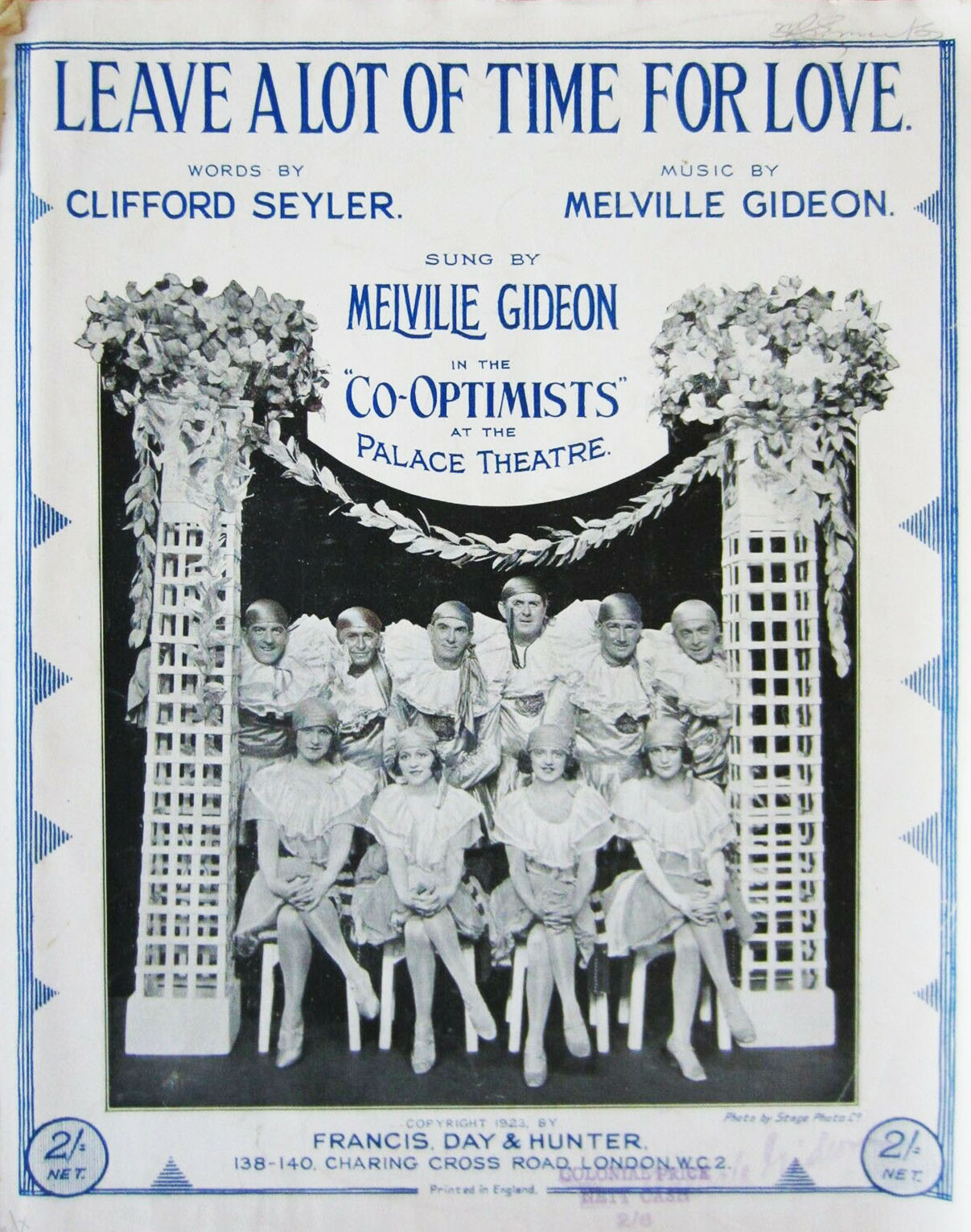
Revue
Original
3) Co-Optimists (The) of 1924 (Original)
Joué durant 5 mois 4 semaines
Nb de représentations: 209 représentations
Première preview: 02 September 1924
Première: 02 September 1924
Dernière: 28 February 1925
Compositeur: *** Divers •
Parolier: *** Divers •
Libettiste: *** Revue •
Metteur en scène:
Chorégraphe:
Avec: Gilbert Childs, Stanley Holloway, Melville Gideon, Davy Burnaby, Austin Melford, Wolseley Charles. Anita Elson, Doris Bentley, Neta Under-wood, Hermione Baddeley, Hoffman Girls.
Commentaire:
Presse:
Plus d'infos sur cette production:
Plus d'infos sur ce musical

Musical
Original London
2) Very Good Eddie (Original London)
Joué durant
Nb de représentations: 46 représentations
Première preview: 18 May 1918
Première: 18 May 1918
Dernière: June 1918
Compositeur: Jerome Kern •
Parolier: Schuyler Green •
Libettiste: Guy Bolton • Philip Bartholomae •
Metteur en scène: Guy F. Bragdon •
Chorégraphe:
Avec: Nelson Keys (Eddie Kettle), Walter Williams (Dick Rivers), Helen Temple (Georgina Kettle), Nellie Briarcliffe (Elsie Darling), Ralph Lynn (Al Cleveland), Veronica Brady (Mme. Matroppo), Stanley Turnbull (Percy Darling)
Commentaire: D’après la farce « Over Night » de Philip Bartholomew, la comédie musicale a ouvert ses portes à New York en décembre 1915 pour un total de 341 représentations. La production londonienne a duré seulement 46 représentations, et a été jugée, par plusieurs critiques, pour être beaucoup trop osée pour les amateurs de théâtre respectables du West End. (plus)
Presse:
Plus d'infos sur cette production:
Plus d'infos sur ce musical


